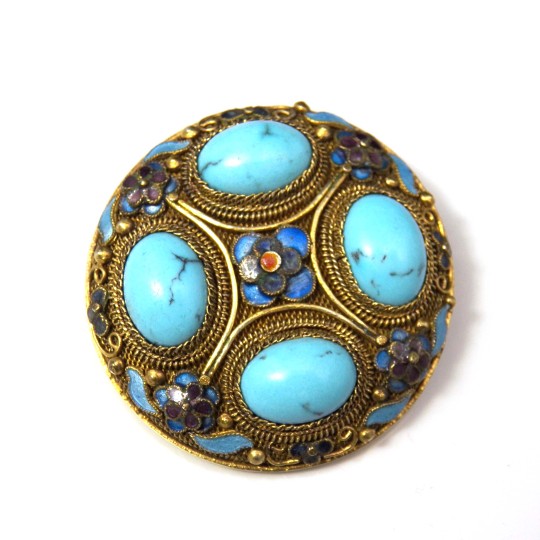#antique brooch
Text
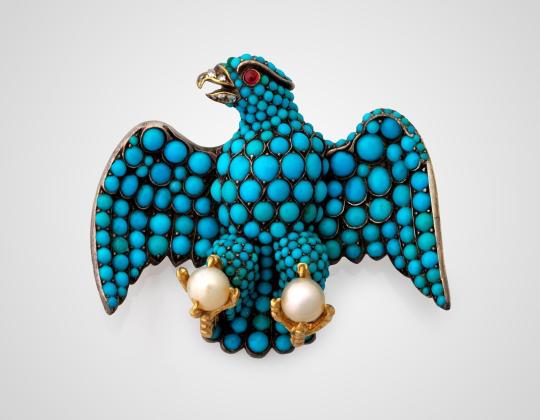

• Coburg Eagle brooch.
Designer: Prince Consort Albert (English, 1819–1861); Maker: Charles Augustus du Vé (British (active in 1840))
Medium: Gold, turquoise, pearl, ruby, diamond.
#fashion history#history of fashion#fashion#19th century fashion#19th century#antique#antique jewelry#antique brooch#brooch#eagle#coburg eagle brooch#prince consort albert#Charles Augustus du Vé#gold#turquoise#ruby#pearls#diamond
877 notes
·
View notes
Text

Antique Opal, Diamond and Emerald Stylized Sceptre Brooch
Source: masterart.com via Pinterest
#antique opal jewelry#opal#diamonds#emeralds#antique brooch#antique high jewelry#opal diamond emerald brooch#opal diamond emerald jewelry#high jewelry#luxury jewelry#fine jewelry#fine jewellery pieces#gemville
184 notes
·
View notes
Text

Late 19th century ruby and diamond bow pendant tassel brooch, French c.1890
Source - SJ Phillips
#jewelry#gold#jewellery#antique#antique jewelry#ruby#diamond#diamond pendants#diamond jewelry#diamond jewellery#antique brooch#brooches#brooch
90 notes
·
View notes
Text
MEDUSA
Medusa is the best known of the three monstrous Gorgon sisters. Our earliest reference to the Gorgons is found in Hesiod's Theogony, but it was Ovid who really fleshed out the story - in the Metamorphoses - where he describes Medusa in her youth:
"Medusa once had charms; to gain her love
A rival crowd of envious lovers strove.
They, who have seen her, own, they ne'er did trace
More moving features in a sweeter face.
Yet above all, her length of hair, they own,
In golden ringlets wav'd, and graceful shone."
Her beauty caught the eye of Poseidon, who forced himself upon her in a shrine to Athena. Athena was furious; she turned Medusa's hair into snakes, and made her face so hideous that anyone who saw it was instantly turned to stone (literally petrified). In most versions of the story, Medusa was killed by Perseus who was given various items to help him on his quest: a mirrored shield from Athena, a sword forged by Hephaestus, and Hades's helm of invisibility. While looking at the reflection in the shield, Perseus was able to behead the Gorgon, at which point Pegasus flew out of her severed neck. He went on to use her head - which retained its petrifying effect - as a weapon, using it to transform the Titan Atlas into stone (where he still stands in North Africa as the Atlas Mountains), before eventually giving it to Athena.
Although Medusa is commonly regarded as a monster, her head has often been seen as a protective amulet to keep evil away. Indeed, the name Medusa comes from the ancient Greek word meaning "to guard or protect".
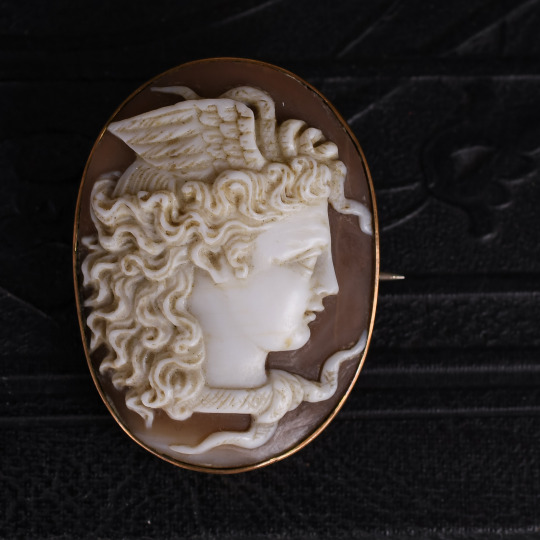
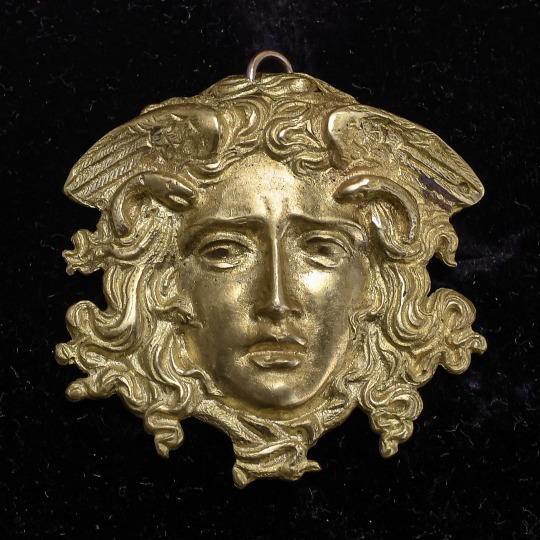
#medusa jewelry#antique jewelry#medusa head#mythology#mythology jewelry#antique brooch#brooches are back#butter lane antiques
9 notes
·
View notes
Photo

College Student Finds Historic Jewelry on beach
You never know what you're going to come across walking along the west coast - as one student found out.
It was on a tour of Omey Island in Connemara in 2016 when student McKenna McFadden came across a tiny brooch that had caught her eye along the shore.
Initially thinking nothing of it, she shared it with the leader of the tour, who happened to be Connemara-based archaeologist Michael Gibbons who was immediately intrigued.
Incredibly, the brooch turned out to be an artifact from the 12th century.
The NYU Dublin student, who was one of several on a visit to Ireland from the USA university, was blown away.
McFadden said, “I had been looking at some rabbit burrows with my friend while on a tour of the island led by archaeologist Michael Gibbons.
"When stepping back from the burrows, I looked down and saw the back of the brooch and picked it up.
“When I first looked at it, I really thought nothing of it! It was really pretty and I thought someone had possibly dropped it,” she recalled, not thinking that whoever dropped it did so centuries ago.
“I kept it with me until I caught up with Michael and he was very intrigued. He had me take him back to the site at which I found it. I didn't fully realize how important the find was at the time. Now, I'm amazed and surprised and I'm very happy that I was able to place it in the hands of people who would appreciate it.”
It turned out that the brooch is only one of a few of its kind to be found in Ireland, and currently resides in the National Museum of Ireland in Dublin.
The brooch would have been used to fasten a cloak or shawl and is called a 'kite brooch' due to its distinctive shape.
McFadden, who is from the USA originally, said she loved being in the west coast and was 'in awe' during her visit to the Emerald Isle.
McFadden added: “I fell in love with the west of Ireland. Connemara is one of the most beautiful places I have ever seen. I was in complete awe the entire time. It's truly a humbling experience."
By Jessica Mercer.
#College Student Finds Historic Jewelry on beach#Ireland#antique brooch#ancient artifacts#archeology#archeolgst#history#history news#ancient history#ancient culture#ancient civilizations
15 notes
·
View notes
Text

1930s Schumann Porcelain Floral Brooch
#vintage#vintage jewelry#vintage brooch#antique#antique brooch#porcelain#ceramic#porcelain jewelry#ceramic jewelry#porcelain brooch#ceramic brooch#schumann#schumann porcelain#1930s vintage#30s vintage#1930s#30s#1930s jewelry#30s jewelry
2 notes
·
View notes
Text

Beautiful Antique Repousse flower brooch. Turn of the century, early 1900’s Art Nouveau floral brooch, hand painted.
1 note
·
View note
Text

bleeding heart brooch by michael michaud
2K notes
·
View notes
Text

Brooch, used to hold clothing together, 1100BC-1000BC Bronze Age Europe.
2K notes
·
View notes
Text

Brooch of carved ivory
c. 1850-1860
Victoria and Albert Museum
#brooch#antique jewelry#vintage jewelry#jewelry#jewellery#ivory#19th century#1850e#1860s#fashion history#antiquities#antiquity#1800s#frostedmagnolias
712 notes
·
View notes
Photo


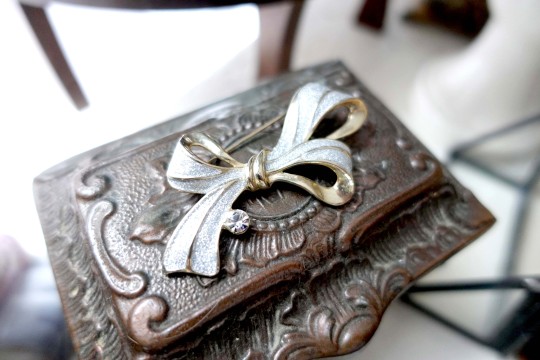


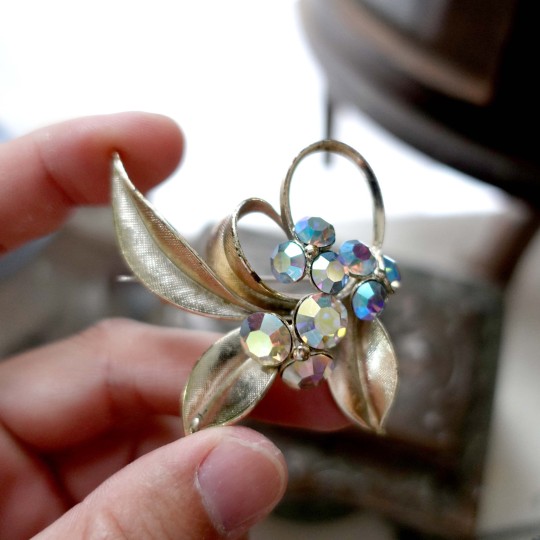


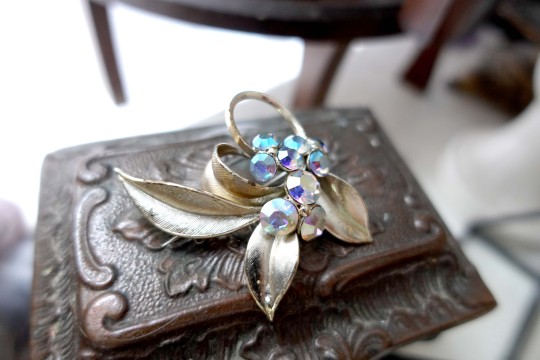
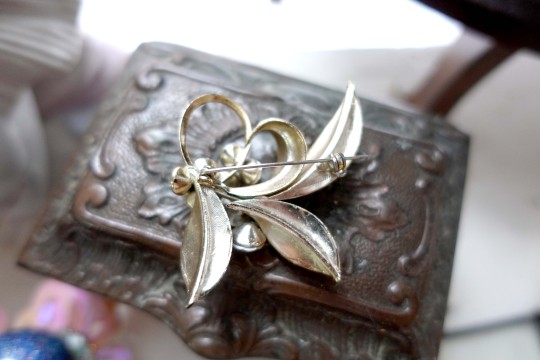
日本中古金屬花卉閃鑽寶石心口針胸針別針 高級二手古著珠寶首飾
**香港前衛時裝設計師品牌作品**
https://youtu.be/yqsLZGsKDX4
www.timbeelo.shop
0 notes
Text
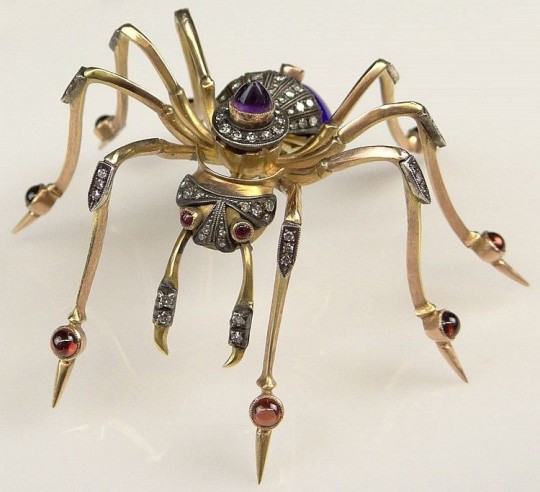
Antique Russian Spider Brooch In 15k Gold, Enamel, Diamonds, Garnets and Amethysts
Source: Invaluable via Pinterest
#spider#spider brooch#spider jewelry#antique brooch#insect jewelry#amethyst#enamel#diamonds#garnets#15k gold#multi gem brooch#multi gem jewelry#high jewelry#luxury jewelry#fine jewelry#fine jewellery pieces#gemville
470 notes
·
View notes
Text

Antique Rose Cut Diamond 18K Gold Griffin Brooch
Via Boylerpf.com
#jewelry#gold#jewellery#antique#vintage#boylerpf#antique jewelry#vintage jewelry#victorian#18k gold#griffon#gryphon#rose cut diamond#diamond#diamond jewellery#diamond pendants#jewels#diamond brooch#antique brooch#winged dragon
26 notes
·
View notes
Text
MEDUSA

(Source: butterlaneantiques)
Medusa is the best known of the three monstrous Gorgon sisters. Our earliest reference to the Gorgons is found in Hesiod's Theogony, but it was Ovid who really fleshed out the story - in the Metamorphoses - where he describes Medusa in her youth:
"Medusa once had charms; to gain her love
A rival crowd of envious lovers strove.
They, who have seen her, own, they ne'er did trace
More moving features in a sweeter face.
Yet above all, her length of hair, they own,
In golden ringlets wav'd, and graceful shone."
Her beauty caught the eye of Poseidon, who forced himself upon her in a shrine to Athena. Athena was furious; she turned Medusa's hair into snakes, and made her face so hideous that anyone who saw it was instantly turned to stone (literally petrified). In most versions of the story, Medusa was killed by Perseus who was given various items to help him on his quest: a mirrored shield from Athena, a sword forged by Hephaestus, and Hades's helm of invisibility. While looking at the reflection in the shield, Perseus was able to behead the Gorgon, at which point Pegasus flew out of her severed neck. He went on to use her head - which retained its petrifying effect - as a weapon, using it to transform the Titan Atlas into stone (where he still stands in North Africa as the Atlas Mountains), before eventually giving it to Athena.
Although Medusa is commonly regarded as a monster, her head has often been seen as a protective amulet to keep evil away. Indeed, the name Medusa comes from the ancient Greek word meaning "to guard or protect".
#medusa#mythology#roman mythology#serpent#myth#gorgon#victorian era#victorian jewelry#antique jewelry#antique brooch#medusa jewelry#mythology jewelry#butter lane antiques
1 note
·
View note
Text
Two in one...

Transformable tiara with lily motif belonged to the Leuchtenberg family, descendants of Empress Josephine, c. 1830. The large hexagonal emerald solitaire can be worn as a brooch.
#Tiara#diamond tiara#antiquejewelry#vintageandantiquejewelryonline#vintage jewelry#1830s#Leuchtenberg#emerald#diamond#brooch#jewelry for women#antique
369 notes
·
View notes
